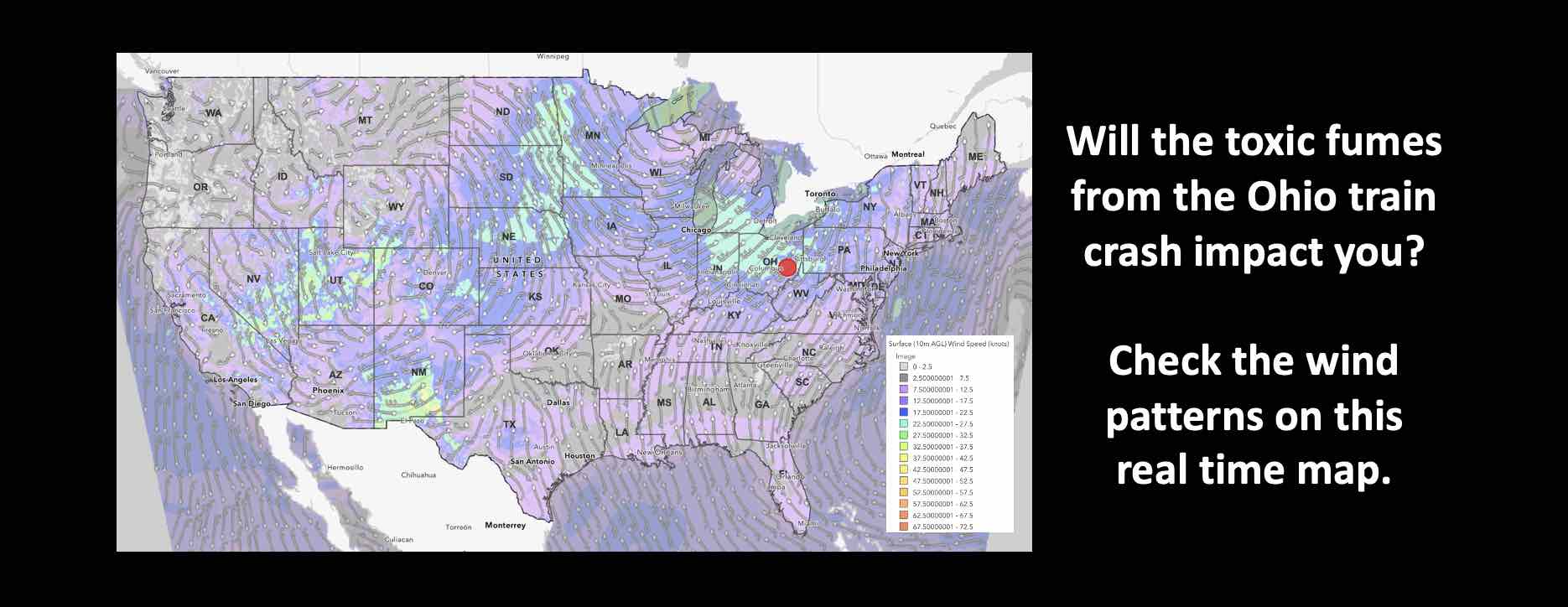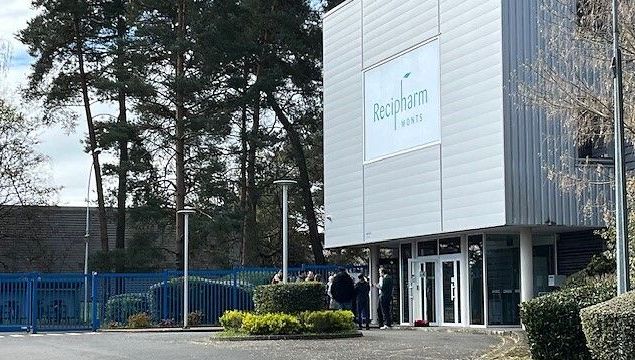Ohio Train Derailment: The Prolonged Presence Of Toxic Chemicals In Buildings

Table of Contents
Pathways of Chemical Contamination in Buildings After the Derailment
The release of vinyl chloride and other hazardous materials during the East Palestine train derailment created multiple pathways for contamination to infiltrate buildings. These chemicals, known for their volatility and persistence, spread through various routes:
-
Airborne Dispersion: Volatile organic compounds (VOCs) like vinyl chloride readily dispersed through the air. Air infiltration through cracks in building foundations, windows, and ventilation systems allowed these chemicals to enter homes and other structures. This process was further exacerbated by prevailing wind patterns.
-
Contaminated Water Sources: Groundwater contamination is a significant concern. Leaking chemicals could have infiltrated the local water table, potentially contaminating residential wells and municipal water supplies used for plumbing systems in buildings.
-
Direct Contact: Buildings situated close to the derailment site faced direct contact with contaminated soil and debris. This contact could lead to the absorption of chemicals into building materials and the contamination of surfaces within the structures.
-
Absorption into Porous Materials: Many common building materials, such as drywall, carpeting, and insulation, are porous and readily absorb chemicals from the surrounding environment. Once absorbed, these chemicals can be slowly released over time, leading to prolonged exposure for occupants.
Scientific studies examining similar industrial accidents support these pathways of contamination. Further investigation is needed to fully quantify the extent of the contamination in East Palestine.
Identifying and Assessing the Extent of Chemical Contamination
Determining the precise extent of chemical contamination in buildings following the Ohio train derailment presents considerable challenges. Effective assessment requires specialized testing and equipment, capable of detecting trace amounts of various chemicals in diverse building materials.
-
Specialized Testing and Equipment: Identifying and quantifying the presence of specific chemicals like vinyl chloride requires advanced analytical techniques, including gas chromatography-mass spectrometry (GC-MS) and other sophisticated laboratory analyses.
-
Identifying Buildings at Risk: Prioritizing buildings most at risk requires a multifaceted approach, considering proximity to the derailment site, prevailing wind patterns during the incident, building materials, and the presence of well water versus municipal water supplies.
-
Long-Term Health Effects: Determining the long-term health consequences of exposure to the released chemicals is a complex process, necessitating extensive epidemiological studies and long-term health monitoring of residents.
-
Role of Environmental Agencies: The Environmental Protection Agency (EPA) and other relevant state and local agencies play a critical role in monitoring the contamination, conducting testing, and overseeing remediation efforts. Their actions and transparency are vital to ensuring public trust and the safety of residents.
Health Impacts of Prolonged Exposure to Toxic Chemicals
Exposure to chemicals like vinyl chloride, even at low levels, poses significant health risks. The potential consequences of prolonged exposure include:
-
Respiratory Problems: Vinyl chloride is a known respiratory irritant, potentially leading to bronchitis, asthma, and other respiratory illnesses.
-
Liver Damage: Exposure to vinyl chloride is linked to liver damage, including cirrhosis and liver cancer.
-
Increased Cancer Risk: Vinyl chloride is a known human carcinogen, significantly increasing the risk of various cancers, including liver cancer, brain cancer, and leukemia.
-
Reproductive Issues: Studies suggest links between vinyl chloride exposure and reproductive problems, including infertility and birth defects.
For reliable information on the health effects of these chemicals, consult resources such as the Centers for Disease Control and Prevention (CDC) and the World Health Organization (WHO).
Remediation and Cleanup Efforts: Addressing the Chemical Contamination in Buildings
Remediating buildings contaminated by the Ohio train derailment is a complex and costly undertaking requiring a multi-pronged approach:
-
Air Quality Monitoring and Improvement: Continuous air quality monitoring is essential to identify and mitigate elevated levels of VOCs. This might involve the use of air purifiers, ventilation improvements, and the sealing of cracks and openings.
-
Water Testing and Treatment: Thorough water testing is crucial to assess the extent of groundwater contamination. Remediation may involve the installation of water filtration systems or the provision of alternative water sources for affected buildings.
-
Removal and Replacement of Contaminated Materials: In severe cases, contaminated building materials (e.g., drywall, insulation) may need to be removed and replaced. This is a labor-intensive and expensive process.
-
Decontamination Procedures: Professional decontamination services may be required to clean and sanitize surfaces and materials within buildings.
-
Long-Term Monitoring: Ongoing monitoring of air and water quality is crucial to ensure the effectiveness of remediation efforts and to safeguard the health of residents over the long term.
The scale of the cleanup presents significant challenges, necessitating substantial resources and coordination among various government agencies, private contractors, and community stakeholders.
Conclusion: Long-Term Implications and a Call to Action for the Ohio Train Derailment
The Ohio train derailment underscores the long-term implications of industrial accidents and the potential for persistent environmental contamination. The prolonged presence of toxic chemicals in buildings demands a comprehensive and sustained response. Thorough testing, effective remediation, and ongoing monitoring are paramount to protect public health and prevent long-term health issues.
We urge you to stay informed about the ongoing situation in East Palestine, advocate for stricter safety regulations for the transportation of hazardous materials, and support efforts to mitigate the effects of this and similar incidents. Stay informed through reputable news sources and engage with organizations working to support the affected communities and demand accountability from responsible parties. The lasting impact of the Ohio train derailment requires continued vigilance and collective action.

Featured Posts
-
 Tres Preguntas Clave Sobre La Victoria Del Real Madrid 1 0 Ante El Athletic Club
May 29, 2025
Tres Preguntas Clave Sobre La Victoria Del Real Madrid 1 0 Ante El Athletic Club
May 29, 2025 -
 Oranjegekte In Liverpool Nederlandse Fans Reizen Massaal Af Voor Potentiele Titelwinst
May 29, 2025
Oranjegekte In Liverpool Nederlandse Fans Reizen Massaal Af Voor Potentiele Titelwinst
May 29, 2025 -
 Winning Motorcycles Winning Riders The Honda Story
May 29, 2025
Winning Motorcycles Winning Riders The Honda Story
May 29, 2025 -
 Lng Bunkering For Cruise Ships In Barcelona Shells Services And Infrastructure
May 29, 2025
Lng Bunkering For Cruise Ships In Barcelona Shells Services And Infrastructure
May 29, 2025 -
 Chiquis Latin Women In Music Impact Award Interview
May 29, 2025
Chiquis Latin Women In Music Impact Award Interview
May 29, 2025
Latest Posts
-
 Le Combat Des Salaries D Amilly Contre La Vente De L Usine Sanofi
May 31, 2025
Le Combat Des Salaries D Amilly Contre La Vente De L Usine Sanofi
May 31, 2025 -
 Sanofi La Vente De L Usine D Aspegic A Amilly Suscite La Mobilisation
May 31, 2025
Sanofi La Vente De L Usine D Aspegic A Amilly Suscite La Mobilisation
May 31, 2025 -
 Amilly Luttes Contre La Cession Du Site De Production Sanofi
May 31, 2025
Amilly Luttes Contre La Cession Du Site De Production Sanofi
May 31, 2025 -
 Sanofi Investiert 1 9 Milliarden Us Dollar In Neue Autoimmuntherapie
May 31, 2025
Sanofi Investiert 1 9 Milliarden Us Dollar In Neue Autoimmuntherapie
May 31, 2025 -
 Sanofi Etend Son Portefeuille Acquisition D Un Anticorps De Dren Bio
May 31, 2025
Sanofi Etend Son Portefeuille Acquisition D Un Anticorps De Dren Bio
May 31, 2025
